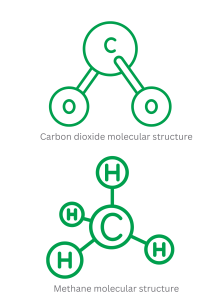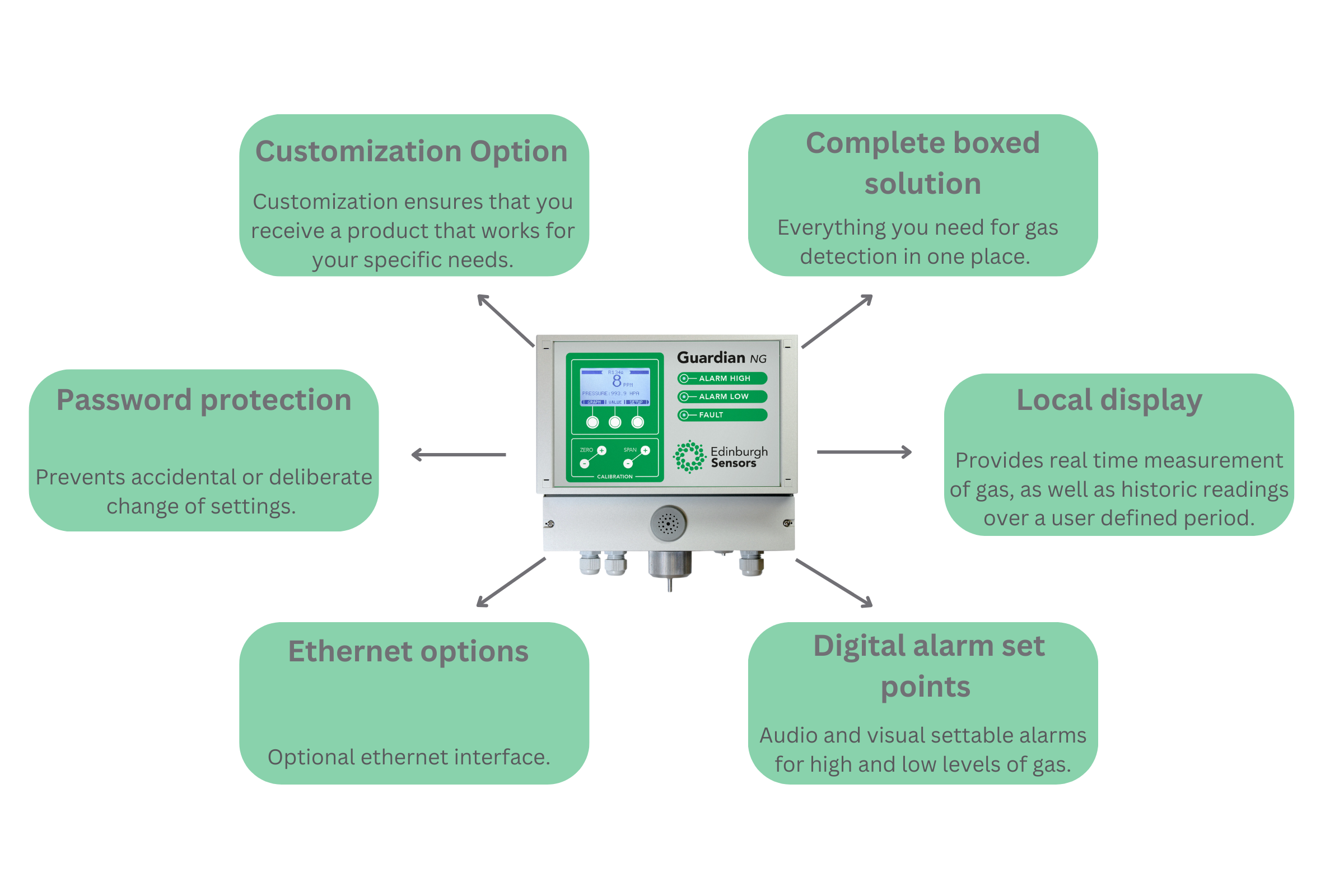What is methane gas?
Methane (CH4) is a colourless and odorless greenhouse gas which is extremely volatile, and is one of the major contributors to global warming due to its high potency. Roughly one third of methane gas emissions occur naturally through sources such as wetlands. However two thirds of emissions are due to human activity, with agriculture activities being a major contributor.
How does methane gas contribute to global warming?
Whilst methane is not as prevalent in the atmosphere as carbon dioxide, its greenhouse gas effect is more potent, making this gas a major contributor to global warming.
But what do we mean by a more potent greenhouse effect?
Essentially, methane is significantly better at trapping heat compared to carbon dioxide, and this is primarily due to the structure of the molecule. Methane has one central carbon atom which has four separate hydrogen bonds, whereas carbon dioxide has one central carbon atom with two separate oxygen bonds.

We can see that methane has more bonds, and a more complex geometrical shape than carbon dioxide, and this allows methane to
have more movement. As a result, this increases the absorption rate of infrared light significantly, which means more heat is trapped within our atmosphere, making our planet hotter and hotter.
Methane doesn’t have a very long lifespan. It will only exist in our atmosphere for approximately 10-20 years. After this period it will break down and become carbon dioxide and water. However the carbon dioxide it becomes will continue to heat our climate for hundreds, and sometimes thousands of years. This means despite methane degrading relatively quickly, it will still cause issues for many years after it has broken down.
Importance of methane gas detection
Overall, all of this vital research relies on monitoring methane gas production by cows accurately. The change in methane emission could be small, therefore sensing technologies which are sensitive as well as accurate are vital. An effective solution for this is NDIR sensing technology, as methane highly absorbs infra-red light. The Sensors Guardian NG is a type of NDIR device, and is the ideal solution for methane monitoring.
The Guardian NG for gas detection:
The guardian is the ideal products for all your gas sensing needs, and with the customization option, you can tailor it to your specific requirements, to ensure a product that is right for you.


